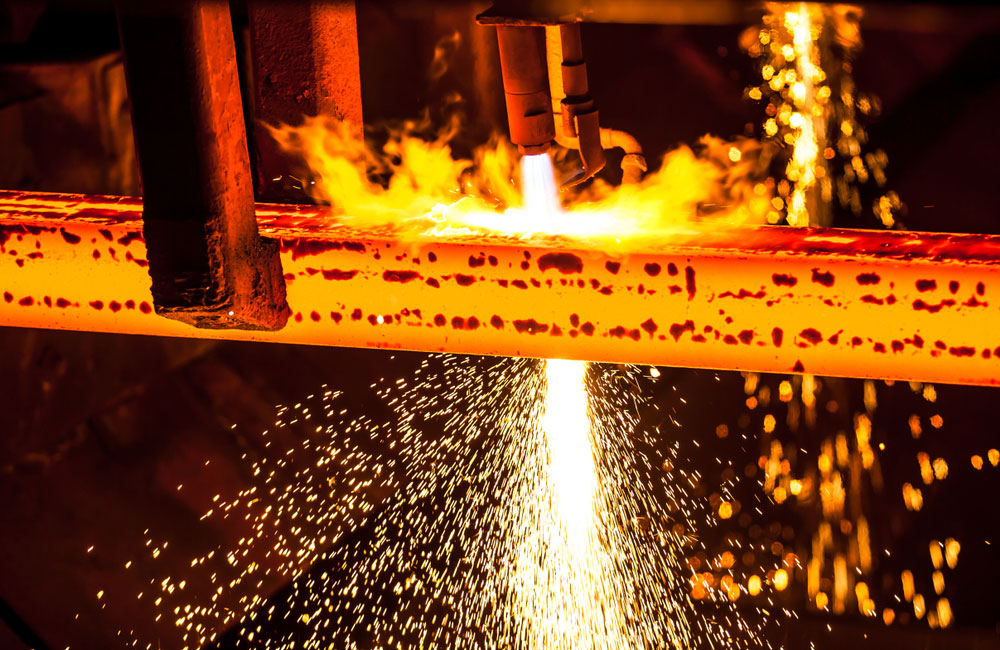
October 15, 2019
The two methods have different results. Coating involves using paint, like a powder-coated finish. The process of plating, specifically “electroplating,” involves passing current through an electrolyte. It splits and deposits atoms on metal objects, making them electroplated.
Continue reading below to find out the benefits of these two finishing processes.
1. Plating Adds Properties to Metals
Precision plating offers various types of electrolytes, such as copper, nickel, silver, and gold-based. Electroplating makes the metal more desirable since it’s used in a vast range of industries. Electroplating is typically used to refurbish old automobile parts, like bumpers, tire rims, and grills, making them look brand-new.
Silver electroplating is usually used on brass and copper connectors because of its superior conductivity. In the telecommunications industry, palladium and gold plating are used for switchgear.
2. Improves Quality of the Manufacturing Processes
Electroplating offers important benefits and features that can improve the quality of the manufacturing processes. By doing so, you can achieve a competitive position in the industry.
Here are some of the benefits of electroplating when it comes to the manufacturing process:
3. Plating Enhances Appearance
Jewelry is usually plated with a thin layer of precious metal, making it more lustrous. Manufacturers use plating as a cost-effective and efficient way to make their products aesthetically appealing. Now, jewelers can sell jewelry that look like precious metals, such as pure gold, at a lower price.
Silver jewelry tends to tarnish when exposed to acidic sweat, and electroplating can help prevent premature tarnishing. It also reduces abrasion and scratches. Thus, silver products can retain their attractiveness, keeping their value over time.
4. Low-Cost Alternative Plating
Tin electroplating is a cost-effective alternative to more expensive plating materials like silver, gold, or palladium. Tin has an abundant supply, making it a popular choice for various industrial applications, including the manufacturing of hardware products, electronic parts, screws, fasteners, and nuts and bolts. Tin plating offers excellent corrosion resistance with good contact resistance and high solderability.

1. Coating Prevents Rust and Corrosion, Improving Product Aesthetics
Coating provides rust and corrosion resistance to parts or components, protecting them against chemicals and contamination. It extends the life of a product both functionally and aesthetically. Also, it reduces product contamination, which is required in the food industry.
Coating also creates a sleek finish while maintaining the integrity of the product. The different applications that can benefit from the rust and corrosion resistance properties of coating include control levers, pallet jack handles, and guardrails.
2. Used to Make Non-Stick Products
Non-stick products are mostly used in the food industry. It ranges from low- to high-release applications. With high-release coating, a quick release is created on a smooth surface.
On the other hand, low-release is applied to a matte surface. Coating reduces scrap, optimizes manufacturability, and increases the productivity and life of the product.
3. Keeps Low Friction to Keep Surfaces Lubricated
Prevent wear and ensure longevity with coating as it uses and promotes low friction.
Coating is used to keep friction low, prevent seizing, and reduce maintenance. The different applications include product chutes, control valve assemblies, and actuator screws.
4. Abrasion-Resistance Coatings Add Durability
Abrasion-resistant coatings add durability and prevent wearing of parts. It protects components from harsh materials, so they perform at expected levels. One application that uses coating is loading chutes that are used for potash.
Also, coating promotes chemical resistance, which prevents contamination and corrosion, and keeps different materials from sticking. Coating is ideal for part processing racks, electrical insulation, containers, valves, tanks, pipers, and mixers.
5. Used for Electrical Insulation
Coating isolates the parts from electrical currents passing through. It prevents static build up and materials from clinging, most especially to the substrate. That’s why coating is used in copy rollers, print industry equipment, and beverage filling probes.
Both coating and electroplating make metal components more attractive, durable, and stronger. When deciding between the two, you have to consider the finished product’s intended use. The more critical the part or component is in an industry, the more metal plating services will be likely in order.

Carol Browns
Carol Browns
Carol Browns is a budding entrepreneur who is still starting to make a name in the manufacturing industry. Equipped with her master’s degree in Business and Management, Carol strives to provide products to help businesses thrive and earn. Carol also writes articles that discuss the different facets and trends in the business arena.
In this episode, I sat down with Beejan Giga, Director | Partner and Caleb Emerson, Senior Results Manager at Carpedia International. We discussed the insights behind their recent Industry Today article, “Thinking Three Moves Ahead” and together we explored how manufacturers can plan more strategically, align with their suppliers, and build the operational discipline needed to support intentional, sustainable growth. It was a conversation packed with practical perspectives on navigating a fast-changing industry landscape.